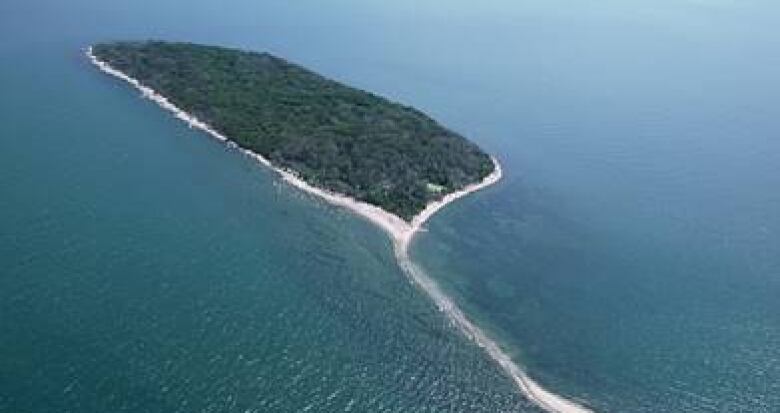Why ecologists are fighting to contain aggressive new species at Point Pelee National Park
Japanese Chaff-flower discovered on Middle Island is likely first record of its existence in Canada

An aggressive plant has popped up in Point Pelee National Park, and it has ecologists furiously trying to contain its spread.
The Japanese Chaff-flower was first discovered on Middle Island, Canada's southernmost land inJune,2018during a routine plant survey of the rare Wild Hyacinth.
According to Parks Canada, ecologist Tammy Dobbie didn't recognize the plants when she stumbled upon a cluster of them, but was determined to identify them.
It wasn't until the fall of that year that botanist James Kamstrasuccessfully identified the plant, "confirming the first apparent case of its existence in Canada," according a news release.
A 'startling' find
"This ominous discovery would have rippling effects through the scientific community as the implications became painfully clear," park officials said in a news release.

Given that the Japanese Chaff-flower is rooted in East Asia, its arrival at the national parkwas "startling."
"It's appearance on Middle Island can likely be attributed to the dispersal of seeds by migratory birds nesting on the island evidence to date suggests double-crested cormorants as a likely carrier," the news release said.
Cormorants have been known to be problematic on Middle Island.The park has spent the last decade or so managing the population with regularculls by park staff to try toprotect the "ecological integrity" of the park, officials have said.
Containment efforts underway
The plant's presence is concerning because it has the capacity to "spread and choke out" native and desirable flora, plus it has the potential to spread far and wide throughout Canada because of its ability to thrive in multiple different ecological zones.

Parks Canada said the Canadian Food Inspection Agency, Canada's national plant protection authority, is conducting a full risk analysis of the plant, and at Point Pelee National Park, control and "eradication" efforts are already underway.
Park authorities said, within a year of it being discovered, the flower hadreproduced and increased to more than ten thousand plants on Middle Island.
The plant's existence is also threatening the survival of the Wild Hyacinth, an endangered species only found on Lake Erie islands.
"Time will tell whether or not it's possible to prevent the spread of Japanese Chaff-flower into southern Ontario and beyond," Parks Canadasaid in a news release.
"Control, research, vigilance, and eradication efforts will play a large role in its containment."
Point Pelee National Park, in southwestern Ontario, cares for the protected area of Middle Island and its "fragile Carolinian ecosystem." The island is a small 18.5 hectare island, part of an archipelago in western Lake Erie.












_(720p).jpg)


 OFFICIAL HD MUSIC VIDEO.jpg)
.jpg)



























































































